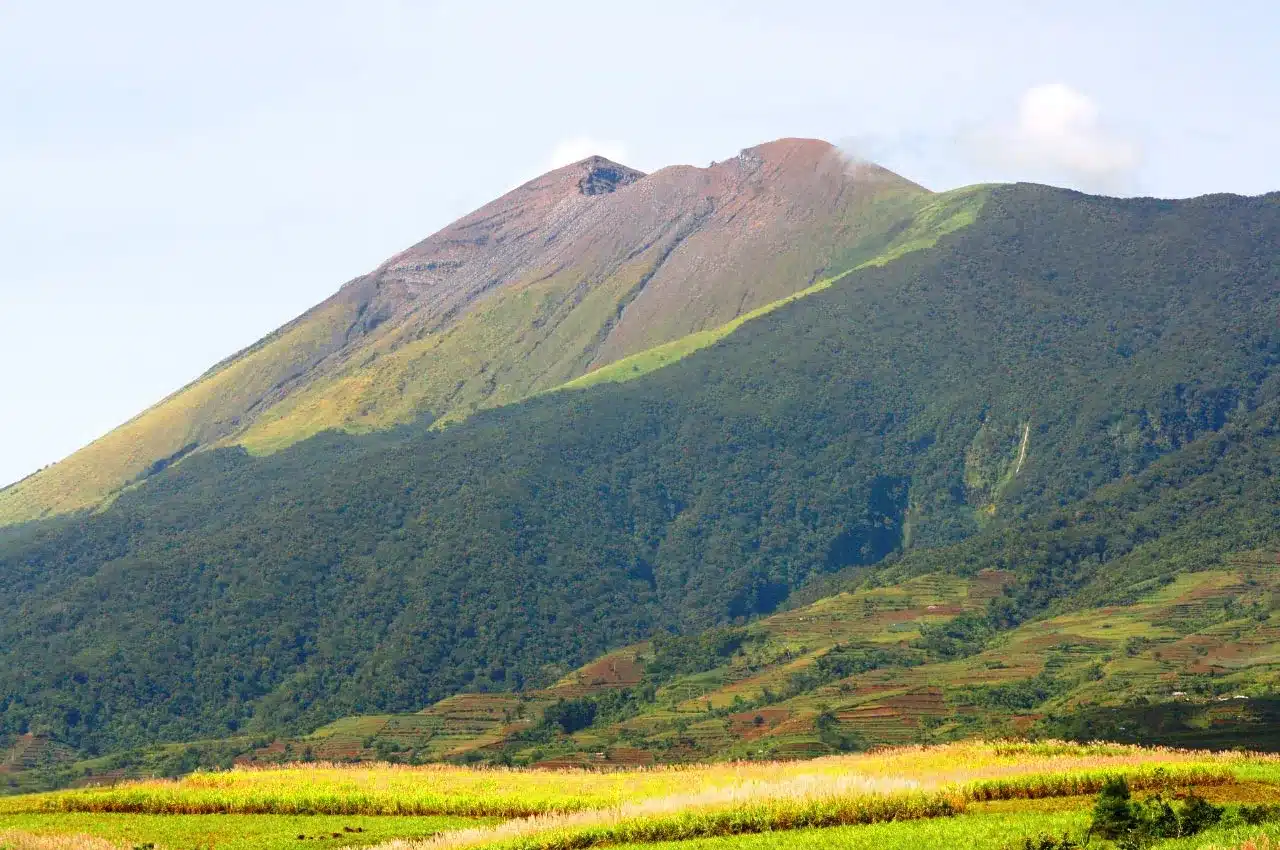About Mount Kanlaon:
- It is a stratovolcano located in the north-central portion of the island of Negros, Philippines.
- It is the highest mountain on the island of Negros and the 42nd tallest peak on an island in the world.
- It is one of the active volcanoes in the Philippines and part of thePacific Ring of Fire.
- The volcano comprises a number of pyroclastic cones and craters.
- The summit of Kanlaon volcano at an elevation of 2435 contains a broad, elongated caldera with a crater lake, with a smaller but more active crater to the south.
- The base of Kanlaon covers an area of 30 km x 14 km.
- It is underlain by tropical volcanic materials composed of sheeted lava flows, lahar deposits, airfall tephra, and apron pyroclastic materials.
- It is biologically diverse; and home to a number of species of Flora and Fauna.
- The slopes are also headwater catchments of major river systems on the entire Negros Island.
- Kanlaon has erupted several times since 1886 and typically comprise phreatic explosions of small to moderate size that produce minor ashfalls near the volcano.
What is a Phreatic Eruption?
- A phreatic eruption is made up of steam-driven explosions that occur when water beneath the ground or on the surface is heated by volcanic activity.
- The water, once heated, begins to boil or can even flash straight to steam, causing an explosion.
- Phreatic eruptions can often precede, accompany, or follow a more traditional volcanic eruption.
- Groundwater can often be found near volcanic vents, and as the magma rises to the surface of the earth, it heats the groundwater and causes these phreatic eruptions.
Q1: What is a Stratovolcano?
The stratovolcano is a tall, steep, and cone-shaped type of volcano. Unlike flat-shield volcanoes, they have higher peaks. At their peak, stratovolcanoes usually have a small crater. The crater may be filled with water or ice, or it may contain a volcanic dome during a period of relative inactivity. Stratovolcanoes comprise the largest percentage (~60%) of the Earth’s individual volcanoes, and most are characterized by eruptions of andesite and dacite, lavas that are cooler and more viscous than basalt.
Source: Hundreds in emergency shelters after volcano erupts in Philippines
Last updated on December, 2025
→ Check out the latest UPSC Syllabus 2026 here.
→ Join Vajiram & Ravi’s Interview Guidance Programme for expert help to crack your final UPSC stage.
→ UPSC Mains Result 2025 is now out.
→ UPSC Notification 2026 is scheduled to be released on January 14, 2026.
→ UPSC Calendar 2026 is released on 15th May, 2025.
→ The UPSC Vacancy 2025 were released 1129, out of which 979 were for UPSC CSE and remaining 150 are for UPSC IFoS.
→ UPSC Prelims 2026 will be conducted on 24th May, 2026 & UPSC Mains 2026 will be conducted on 21st August 2026.
→ The UPSC Selection Process is of 3 stages-Prelims, Mains and Interview.
→ UPSC Result 2024 is released with latest UPSC Marksheet 2024. Check Now!
→ UPSC Prelims Result 2025 is out now for the CSE held on 25 May 2025.
→ UPSC Toppers List 2024 is released now. Shakti Dubey is UPSC AIR 1 2024 Topper.
→ UPSC Prelims Question Paper 2025 and Unofficial Prelims Answer Key 2025 are available now.
→ UPSC Mains Question Paper 2025 is out for Essay, GS 1, 2, 3 & GS 4.
→ UPSC Mains Indian Language Question Paper 2025 is now out.
→ UPSC Mains Optional Question Paper 2025 is now out.
→ Also check Best IAS Coaching in Delhi

















